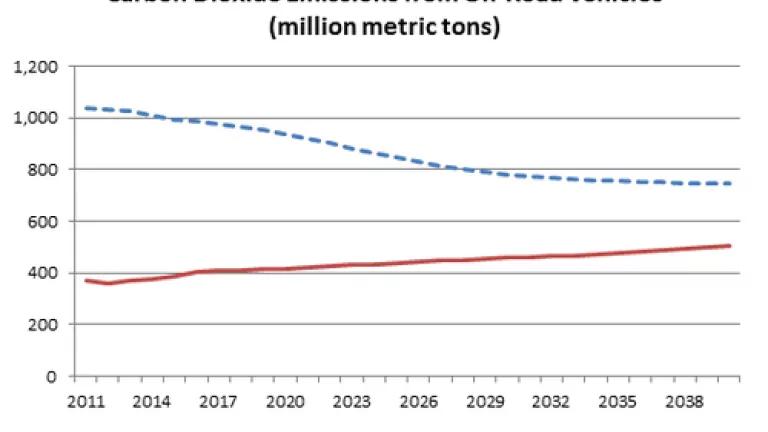
The transportation sector accounts for roughly one-third of national carbon dioxide emissions, and is the second largest emitter behind power plants. On-road vehicles account for 80 percent of transportation emissions, and after cars, trucks are the second biggest polluters. That’s why it is important that President Obama called for new emissions and fuel efficiency standards for heavy-duty trucks in his State of the Union address and as part of his Climate Action Plan. Strong fuel efficiency standards are a win-win proposition that save businesses money and reduce dangerous carbon pollution.
Fuel efficiency standards are a success story worth building on. During its first term, the Obama Administration made great strides in increasing our energy security and economic security and cutting carbon pollution by setting landmark clean car and fuel economy standards to 2025 and the first ever fuel-efficiency standards for heavy-duty vehicle to 2018. Under the Climate Action Plan, the Administration will set much needed heavy vehicle standards that extend beyond 2018.
Freight trucks are the fastest growing source of carbon pollution in the transportation sector. Without tighter standards in the future, the Energy Information Administration (EIA) projects that on-road freight trucks will increase carbon dioxide emissions at an average rate of 1.2 percent from 2011 to 2040. In contrast, EIA projects that light-duty vehicles will decrease emissions over the same time period.
Data source: EIA Annual Energy Outlook 2014
Strong standards can put heavy trucks on a cleaner road into the future, with lower fuel consumption that will save drivers money while cutting carbon pollution. Based on analysis by the National Academies of Science, known cost-effective technologies can achieve fuel consumption and carbon pollution reductions of 5 percent per year, a rate similar to that being achieved with cars and light trucks. According to analysis by ACEEE, the on-road U.S. trucking fleet could cut oil consumption by 1 million barrels per day in 2030, which would also reduce carbon pollution by about 200 million tons per year.
The Obama Administration has a proven track record for implementing cost-effective vehicle fuel efficiency standards. We want to see that success continued. In the coming months, we look forward to working with the Administration to ensure that the next round of truck standards are strong, with optimized fuel savings and maximized reductions in carbon pollution. We can have cleaner air while U.S. truckers deliver freight using fewer gallons of fuel; it's an idea that clearly makes good sense.

